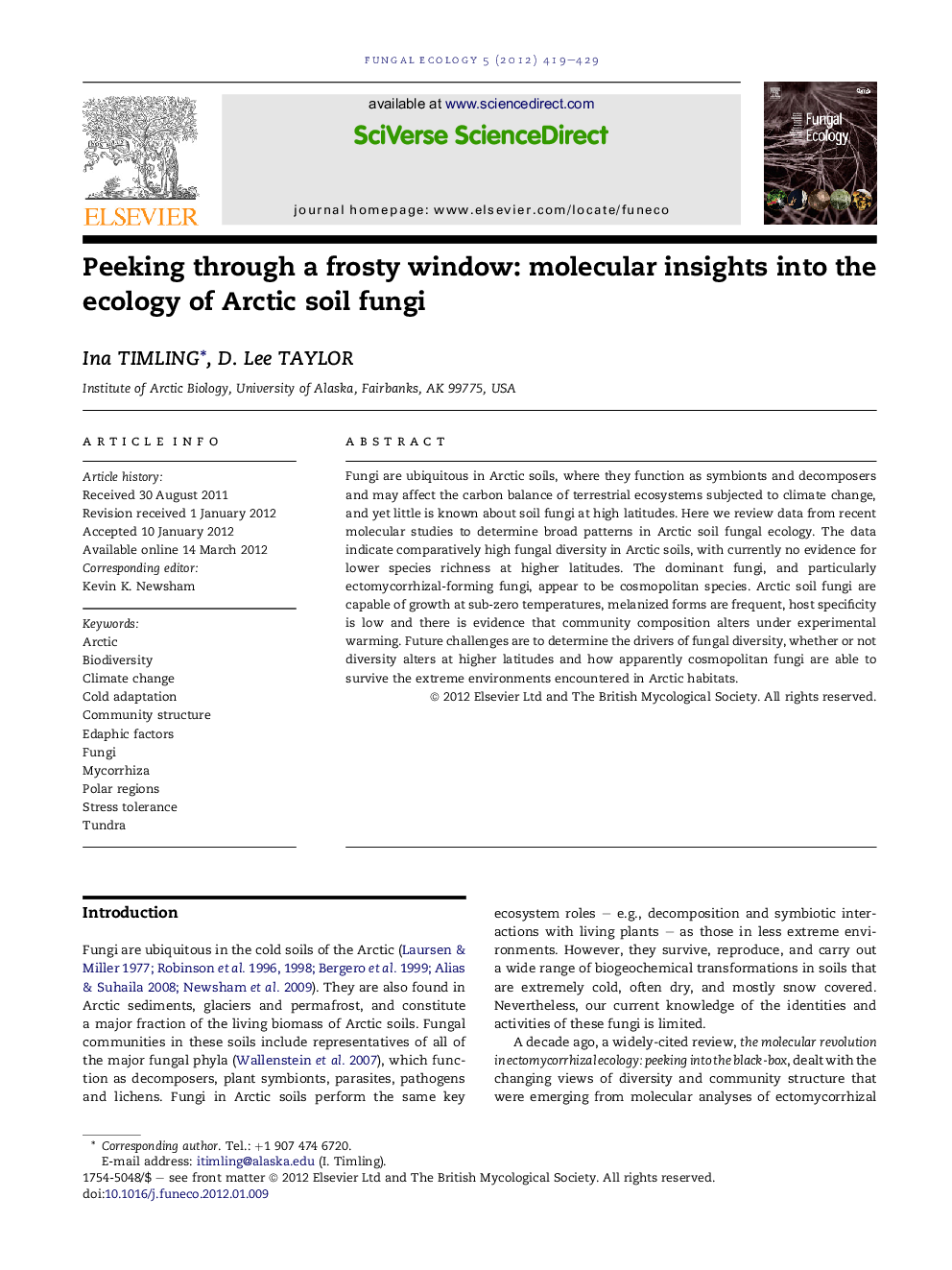| کد مقاله | کد نشریه | سال انتشار | مقاله انگلیسی | نسخه تمام متن |
|---|---|---|---|---|
| 2054033 | 1075595 | 2012 | 11 صفحه PDF | دانلود رایگان |

Fungi are ubiquitous in Arctic soils, where they function as symbionts and decomposers and may affect the carbon balance of terrestrial ecosystems subjected to climate change, and yet little is known about soil fungi at high latitudes. Here we review data from recent molecular studies to determine broad patterns in Arctic soil fungal ecology. The data indicate comparatively high fungal diversity in Arctic soils, with currently no evidence for lower species richness at higher latitudes. The dominant fungi, and particularly ectomycorrhizal-forming fungi, appear to be cosmopolitan species. Arctic soil fungi are capable of growth at sub-zero temperatures, melanized forms are frequent, host specificity is low and there is evidence that community composition alters under experimental warming. Future challenges are to determine the drivers of fungal diversity, whether or not diversity alters at higher latitudes and how apparently cosmopolitan fungi are able to survive the extreme environments encountered in Arctic habitats.
► Currently, there is no evidence for decreasing species richness with latitude.
► Composition of arctic fungal communities correlates with climate and soil.
► Arctic fungi are frequently melanized and many can grow at sub-zero temperatures.
► EMF in the Arctic show low host specificity and seem to be cosmopolitan.
► A major challenge ahead is to understand how cosmopolitan fungi are also adapted to cold.
Journal: Fungal Ecology - Volume 5, Issue 4, August 2012, Pages 419–429